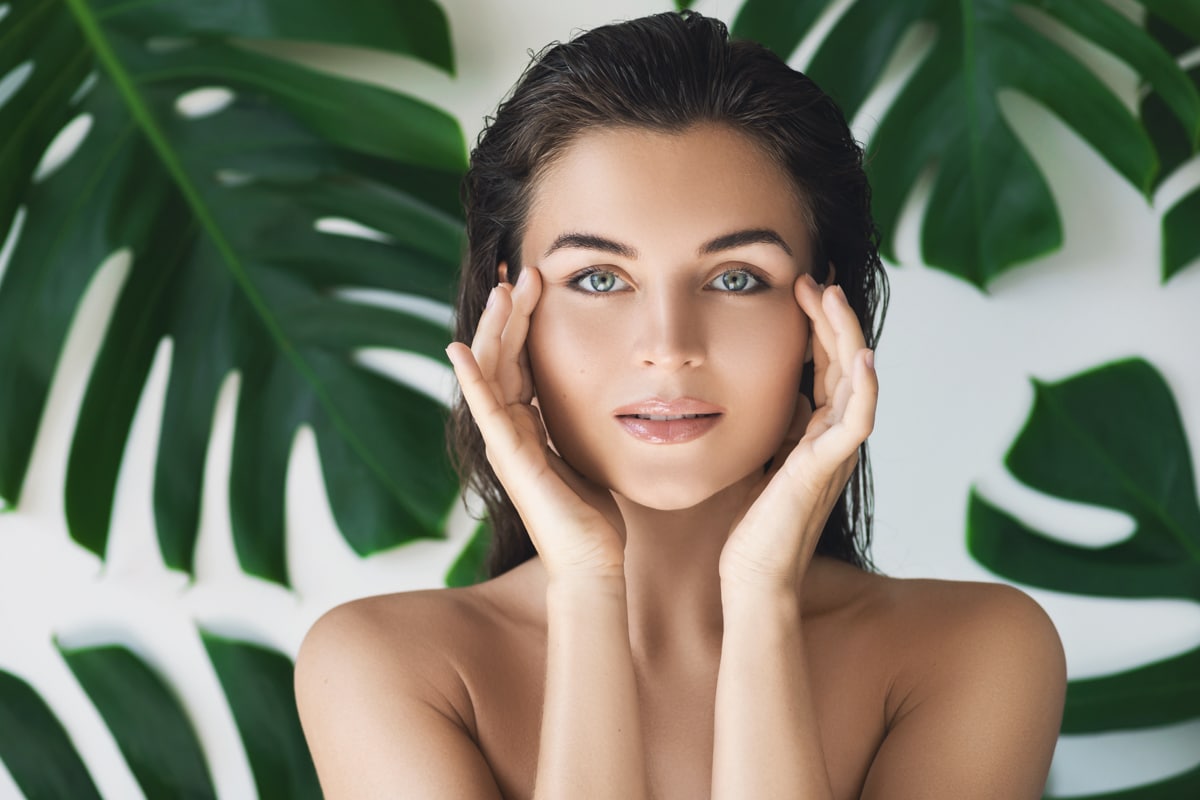and are specially formulated to be mild and gentle, so they’re supposed to be great for . The formulation claims to contain no irritants and respect your balance. This brand is well-known in England, of course, but also in the USA. It was the world’s first mass-marketed translucent produced and sold in 1807 by in a factory near Oxford Street in London, England. Then, the A. F. Pears Company initiated numerous innovations in sales and advertising under the direction of Thomas J. Barratt.
But let’s get back to was born around 1770 on a Cornwall farm and then moved to London around 1787. He established a barber shop on Gerrard Street in Soho after completing his apprenticeship in 1789 and began making cosmetic products. Soho was an upper-class residential area at the time, so his clientele comprised of the rich and famous.
Having a pristine white complexion was all the rage amongst the wealthy people at the time. He convinced them that tanned faces belonged to those who worked outdoors. Pears realized that the powders and creams these people used to whiten their were damaging. It was due to the content of lead and arsenic and the resinous nature of soaps and other beauty products of the era.
It was then that he began experimenting with clear soaps. This work led to a mild soap-based on and other natural products. The ‘s translucence was quite novel then, so it was easy to sell. Pears gave his a scent reminiscent of an English garden to add to its appeal.
The Pears company established a large market for in the USA during the 19th century. Then, grandson Francis Pears joined the business In 1835, and the company was renamed A. & F. Pears. Andrew retired three years later and left Francis in charge. Subsequently, the company received the prize medal for best at the Great Exhibition of 1851.
In 1862, they moved the production to Isleworth, and Thomas J. Barratt (one of the fathers of modern advertising) came on board as a bookkeeper a couple of years later. Then, Andrew, son of Francis, joined the board the following year and took charge of the Isleworth factory. In turn, Thomas married Mary Pears, Francis’s eldest daughter, and took over the company’s management in London. He made notable contributions to the world of print advertising and promotional campaigns around this time.
The Lever Brothers took control of A. & F. Pears after Barratt’s death in 1914 and completed the takeover process. The marketing department and other ancillary functions were moved to Port Sunlight in northwest England in 1920. The production continued at Isleworth, and each batch of (about 12 batches per day) was tested to ensure minimum levels of alkalis and fatty acids until the late 1950s.
Production moved to Port Sunlight in the 1960s when Unilever, successor to Lever Brothers, set up a cosmetic development laboratory in the former Isleworth factory. It happened after the fire that destroyed the original factory. is currently manufactured in India by Hindustan Unilever. Unilever Brands now has a 67 percent stake in it.
The Production of
The first Pears plant was a small facility attached to the store, and the factory was staffed by personnel inexperienced in the specialized process. They all developed immunity to the effects of breathing in an alcohol-laden atmosphere in the plant building.
This was manufactured using an entirely different process from other soaps. It’s a mixture of “tallow” and other fats saponified by an alkali into industrial methyl alcohols. The resulting glycerol was poured into small containers after complete saponification and molded into opaque oval bars as soon as the translucent amber-colored liquid had cooled sufficiently. These bars were then cut into smaller bars suitable for hand washing and ready to begin their long drying period in hot ovens.
The hot liquid had a total fat percentage of 45 percent, compared to the usual 70 to 80 percent in conventionally produced soaps. However, the fat content increases considerably when the alcohol content decreases during drying. Furthermore, the concave shape of the originates from its shrinkage while drying. The original weight of the bars was 75 g and 125 g, and then the company added two more. They weigh 69 g and 119 g, respectively. All are available in classic amber, green, and turquoise, and each color have a unique scent.
Is Good for Aging?
There are many benefits to using this type of . The helps the absorb from the air and lock it in, so it stays soft and supple. The product is particularly good and can provide relief for those with that’s flaky and itchy and also for acne-prone, even though the original formula has been modified several times.
Somewhere above, we mentioned that contains rosemary, a fragrant perennial. People have been using this herb as an astringent as it can help cleanse and clarify the . It’s also a popular in aromatherapy and used for treating various ailments. This plant is usually part of the formulation of moisturizers and some products for .
Thyme is also part of the formulation of and it brings it all together in terms of . This herb has antimicrobial and disinfectant properties that cleanse the skin and leave it fresh. The plant is popular in aromatherapy as it stimulates brain activity and memory. It can counteract insomnia.
Recent changes in the quality of the ingredients used in the manufacturing process have resulted in a noticeably different shape. The soaps are now flat instead of concave. Also, the classic clear amber bar has a new . The aroma is mild at first, but the spicy notes make it stronger. It’s reminiscent of coal tar, and its emollient properties have decreased. Currently, the company manufactures bars, body washes, and hand washes. Let’s look at some of their characteristics.
The Products
Let’s begin by saying that Pears soaps are -free. Wait, what? How can that be! Well, let’s get into this a little bit. Traditional soaps contain salts of fatty acids (such as sodium laurate) and can be harsh because their pH is higher than your skin’sdamage your epidermal layer of cells. The thing is, you don’t always need it to be clean.
Many other ingredients can act as cleansers – lemon juice, pumice, and alcohol are just a few of them. Thus, the term “-free” implies that a given product won’t dry out your like a traditional as these are usually pH balanced. This means that they have the same pH as your – around five on the Ph scale.
Pure and Gentle Bar Soaps
Pears isn’t like a regular and has many advantages over others. Skin-softening is one of its main ingredients. The translucent texture and are pleasant, and the is remarkably delicate and gentle on your adds a glowing effect. This kind of contains but not too much of them, so it’s a good choice for people with . It cleanses your deeply and doesn’t disturb your pH balance. In addition, the is paraben-, sulfate-, and paraffin-free and quite economical.
The has been around for 200 years and is still made with a unique process of molding and maturing. It sits there until it reaches pure transparency.
It gently moisturizes your to keep it smooth. The is quite mild, and the lather smooth. The comes in three presentations. There’s Pears Pure and Gentle S with , Pears Germ Shield S with mint extract, and Pears Oil Clear S with lemon flower extract. All are tested.
Pure and Gentle Shower Gel
This product is a body wash version of the original so it’s quite gentle as it also contains 98 percent , which helps retain and the of your . It has the usual mild so it’s suitable for any . It’s also 100 percent soap-free, soothes your , cleans, and moisturizes deeply. Not only that, it’s dermatologist-tested, hypoallergenic, and non-comedogenic.
The product comes in a flip-top cap bottle that looks like a large version of the Pears bar. It also has a cute hook to hang in your shower. One of the coolest features is the gel doesn’t drip out. Not even when the flip cap is open, so it’s great for traveling. The downside is that you have to squeeze the bottle hard to take the gel on your loofah. It could be bad for people with arthritis.
Pure and Gentle Hand Wash
The formulation of this product is pretty similar to the ones above but especially made for sensitive and , which doesn’t affect its cleansing properties. It’s also mild and gentle, dermatologist-tested, hypoallergenic, and non-comedogenic.
The Pears Pure and Gentle Liquid Hand Wash contain that carry the of the company’s iconic – rosemary, lavender, and thyme. It comes in a dispensing pump bottle that’s 100 percent recyclable. The hand wash is suitable for vegans as it hasn’t been tested on animals and is also dermatologically tested.
Marketing
The first popular promotional campaign for used the image of a well-known Ruggero Focardi sculpture. It was entitled “You dirty boy” and exhibited at the 1878 Paris Universal Exhibition. These statues were so successful that Pears acquired the right to produce copies of them to advertise his products. They were originally designed for store windows and made of terra cotta, plaster, and metal.
They first sold pears soap in London in 1789, and its aging process is still used in the factory in India. The classic has been sold for over 200 years and this is largely due to its natural ingredients.
was famous for its poster and print advertising, planned by Barratt in the late 19th century. The campaign that used the painting entitled “Bubbles” ran for many decades. Like many other brands of the time, in the early 20th century, Pears also used its product to sign the prevalent European concept of the “civilizing mission” of commerce. represented a sign of progress in this vision.
Furthermore, Pears used coins minted with the legend “” as an advertising vehicle for its in the late 19th century. The coins were imported from France and had the same size and shape as the British pennies of the era. These French coins were generally accepted as pennies in Britain.
Actress Lillie Langtry was the first woman paid to recommend a commercial product. She was famous for her ivory-white complexion and, thus, great for advertising . Also, the soap cost was linked to its weight, and people paid a pound for a pound of it.
Pears distributed calendars between 1891 and 1925 and launched the annual “Miss Pears” competition in 1957 – these calendars are now collector items. Parents would push their little daughters into trying to get the prized “young brand ambassador.” It was a rather lucrative contract that meant the company could use the girl’s image on its packaging and in any promotions. Many of these girls subsequently became models or actresses.
The British company Cert Brands took over the marketing and distribution of in 2003. Moreover, the competition continued until 2021, as the images of cute children were sending out an image the company no longer wanted.
Pears Reformulation
They changed the formula for the translucent amber soap from the original in October 2009. The company labeled it “Gentle Care” and presented it wrapped in cellophane inside a box. The new product was a bit softer and didn’t last as long. In addition, the mild spicy herbal classic scent of the original formula was now stronger and, thus, not as appealing. The company also dropped the hypoallergenic, non-comedogenic claim and that of the 3-month aging process described in the original box.
However, the company abandoned this new recipe after a Facebook campaign in which people said the new one was disgusting in terms of smell and feel. The campaign began when customers realized they could no longer buy the traditional version in pharmacies and stores across the UK, and only the new formula was available. Spokespeople of the group “Bring Back The Original ” said the new was radically different from the old one. Thus, after many complaints, the management at Pears agreed to bring the old formula back, or something like it.
The company announced on 6 January 2010 that Pears would abandon the new formula and a new version would be available by March 2010. One “much closer to the original.” A few days later, they announced that they wouldn’t abandon the new formula, only improve it by delivering a scent closer to the original.
The original formula contained eight ingredients: Sodium Palmitate, Natural Rosin, Glycerine, Water, Sodium Cocoate, Rosemary Extract, Thyme Extract, and Pears Essence. The new one has 24: Sorbitol, Aqua, Sodium Palmate/Stearate, Sodium Palm Kernelate, Sodium Rosinate, Propylene Glycol, , PEG-4, Alcohol, , Perfume, Sodium Chloride, Sodium Metabisulfite, Etidronic acid, Tetrasodium EDTA, BHT, Cl 12490, Cl 47005, Benzyl Benzoate, Benzyl Salicylate, Cinnamal, Eugenol, Limonene, Linalool.
It wasn’t until 2016 that the Unilever Website announced that the beloved British icon returned and Pears was to be re-launched in the UK. The company followed up on its promise but not with the original formula. Hindustan Unilever mainly took the feedback as input to make further improvements and deliver a scent that resembled the original while retaining all the benefits of the new formulation.
The company said the change to the formulation of the was due to modifications to the manufacturing process. They wanted to make it more energy-efficient and saw an opportunity to improve the formula by adding consumer benefits, increasing the moisturizer levels in the product, for example. Thus, the new formula contains four humectants instead of one. Unilever confirmed the product is still hypoallergenic and non-comedogenic and emphasized that all product packaging is environmentally-friendly. They added the inner flow wrap to protect the soap better.
So, is good for aging? People who dislike the new formula don’t think it’s as good as it used to be. Thus, try it out for yourself and make up your mind.










